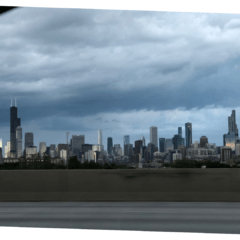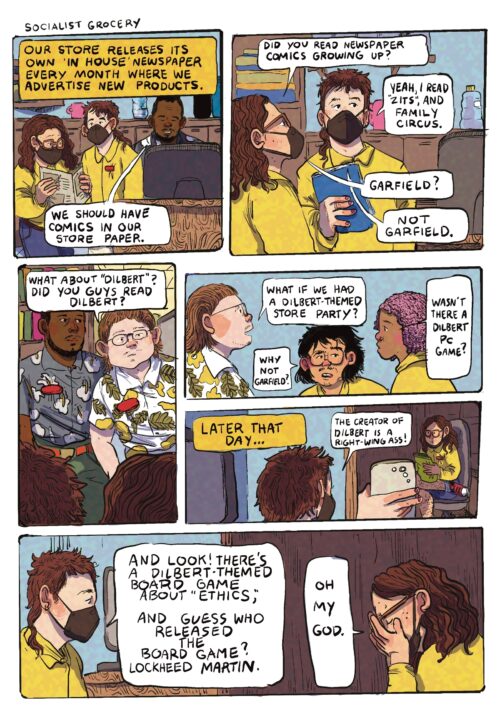[Lauren reviews Cheryl Harper’s latest show, which includes references to politics, Dutch still lives, and the veritable garbage we sometimes eat. — the Artblog editors]
I was going to begin this by writing, “a safe word for Cheryl Harper’s work would be…” before I came to the conclusion that Harper’s work is anything but safe. Harper combines clever political innuendos and even cleverer comments on the futile state of our society and today’s generation. All of this cynicism and witty banter is rolled up into sculptures paying homage to the classically dark Dutch still lives of the 16th and 17th centuries (vanitas, for all of the art history nerds out there) and eerie ceramic sculptures of America’s political monarchy, from Condoleezza Rice to Bill Clinton. James Oliver Gallery lends its white atmosphere to showcase Harper’s somewhat twisted, completely sarcastic world.
Tongue-in-cheek vanitas
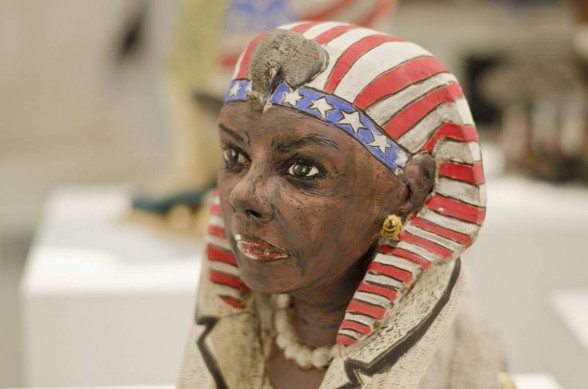
In the center of Oliver’s gallery, perched feline-like atop a pedestal, rests “Condoleezza Sphinx,” a hybrid of politico Condoleezza Rice and the traditional Egyptian sphinx. Other animal hybrids by Harper which surround this piece are loud, almost garishly colored, but “Condoleezza” rests in a panther-like state, portrayed elegantly, composed, and with a quiet power. The stoneware sculpture wears an American-flag-emblazoned pharaoh’s headdress, pearls, and a white suit, with small leopard-print pumps resting at her side. Her hands outstretched like lion paws, Condoleezza also wears a dignified and distant look carved and painted into her face. The Egyptians believed that the sphinx symbolized the dominance of a lion and the intelligence of a king, and Arab nations saw the sphinx as the “Father of Terror”. Perhaps given her associations with the Middle East, “Mother of Terror” would be a more appropriate title for Rice.
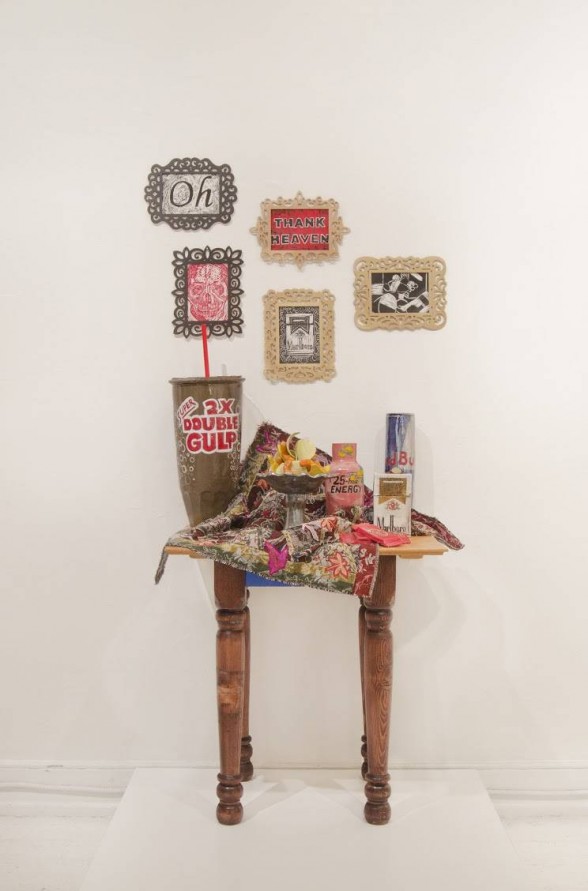
“Oh Thank Heaven” is a vanitas sculpture displaying Harper’s skills as a multimedia artist. A loose definition of vanitas is a symbolic still life painted to point out how meaningless and short our time on Earth is. The classic vanitas painting usually uses flowers, fruits, skulls–objects of impermanence.
Harper playfully (she is darkly playful, for sure) selects objects that can be found at a convenience store closest to you–a Big Gulp (2x, because, you know, more bang for your buck), a 25-hour energy drink (because 24 just isn’t enough), a Red Bull (to chase that 25-hour energy with), and the ever-notorious Marlboro pack–and portrays them with stoneware, wood, relief prints, painting, and appliqués. The quick fixes sit on a fabric-topped end table, creating some kind of shrine to modern-day mediocre food, drink, and vice.
Worshipping the mundane
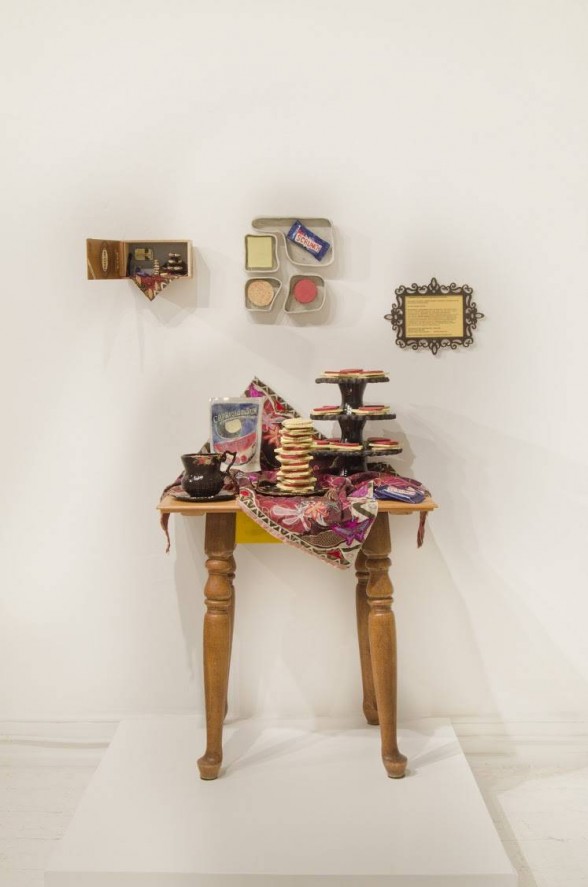
Continuing the vanitas vibes is “Tea Time,” a sister piece to “Oh Thank Heaven”. “Tea Time” is an ode to the classic idea of ladies taking tea: a three-tiered cake platter, daintily painted china, and a tablecloth are the backdrop for a tower of store-bought, packaged lunch meats and cheese and crackers; a teacup filled with “Capricious Sun” (we see what you did there, Harper), and a few “Scrunch” bars.
Displayed above the shrine-like homage are cardboard cartons showing the different ingredients of the table setting, a framed note, and a miniature of the sculpture nailed to the wall. Just like “Oh Thank Heaven,” “Tea Time” is a multimedia collage sculpture incorporating stoneware, relief prints, painting, and woodworking; it also reminds us of the literal garbage we put in our bodies, and how, just as this garbage never seems to rot in the store, it sits within our bodies, decomposing at a painfully slow pace.
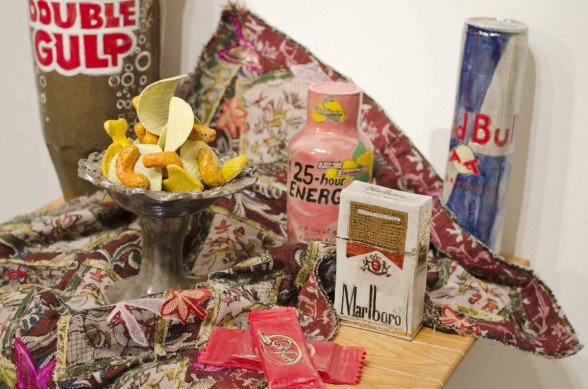
Harper does not lend much to the viewer who is searching for sunshine and rainbows in artwork. Her work appeals to a more cynical audience–a group of people who enjoy looking beyond the surface of otherwise playful-looking sculptures and seeing the underlying meaning behind the facade. For those who wish to make the climb to James Oliver’s 4th-floor gallery, what you will find will be a reminder that our time here is short and uncertain (kind of like government, huh?), but we might as well enjoy ourselves and have a Capricious Sun and a Scrunch bar or two to make the climb a little more bearable.
Convenient Vanities and Political Fancies is on view at James Oliver Gallery (723 Chestnut St., 4th floor, Philadelphia, PA) through Jan. 15, 2015.



